The Christmas season is officially over, and the twinkle lights have been put away. Skies overhead are grey with the talk of cold and snow. Many of us are feeling the darkness left behind from the light of the holiday season. Fortunately, there is a way to brighten the mood while being stuck inside through the winter season. Every January 10, the nation celebrates National Houseplant Appreciation Day. I will now provide you with ways you can celebrate this special day.
1. Buy yourself a new houseplant! Just because the poinsettias and trees are gone from the holidays, does not mean you have to go without a fresh look with new vibrantly colored plants. In fact, a new houseplant can improve your mood as well as the air quality in your home. Plants convert carbon dioxide into oxygen for us to breathe. Another fun fact about houseplants is, they release moisture into the air that helps with humidity and makes your house feel more refreshed and cooler.
2. If you already have a houseplant, give it a name! I have several houseplants myself. All of them have a special name: Shammy, Betsy, Reginald, Susie, and Matilda. By naming your plant, you are building a connection with them. When they are flourishing and doing well, you will feel a sense of excitement and accomplishment. On the opposite side of this spectrum, if they look like they are suffering you will feel concerned and tend to your houseplant closely.
Here are pictures of my houseplants that I love and adore (with their names included)!
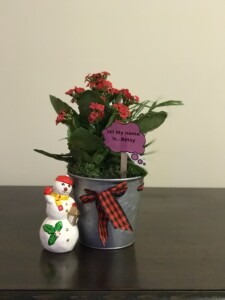
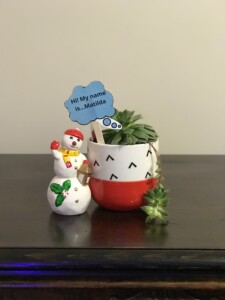
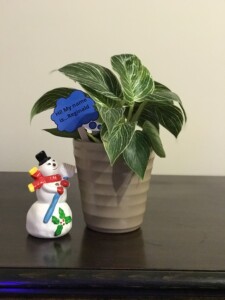

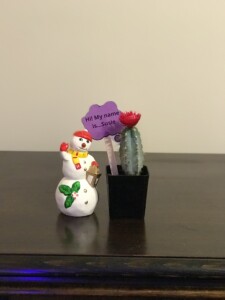
Betsy Matilda Reginald Shammy Susie
3. Play music for your houseplant! Sound waves from certain music stimulates the plant’s cells and promotes growth. Most plants prefer gentle sounding music such as classical or jazz. I have even read that roses love violin music! Plants do not care for harsher sounds, and these sounds have been known to cause stress in plants. So, if you feel like giving your plant its own spa day, use a gentle touch with some soothing music.
Studies have proven that indoor plants keep us all happier and healthier. We have less stress and are more productive, leading us to be less fatigued. The air is cleaner for us to breathe, so we have fewer skin conditions and headaches. Getting yourself a houseplant to care for is inexpensive and is a great way to deal with those winter blues!
Here are some resources from the library to help you care for your houseplant!
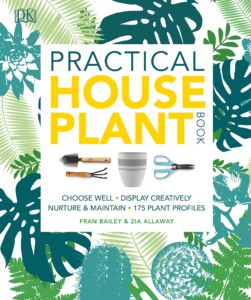
Practical Houseplant Book by Fran Bailey (2018), 224 p.
Summary: Learn how to choose which plants to use where, care for your houseplants to keep them healthy, and use plants to best effect in your home, with trusted advice, creative inspiration, strong visual aesthetic, and practical step-by-step detail.
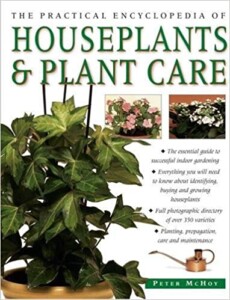
The Practical Encyclopedia of Houseplants and Plant Care by Peter McHoy (2000), 256 p.
Summary: Identifying, buying and growing indoor plants, with a guide to 350 varieties, and 600 photographs.
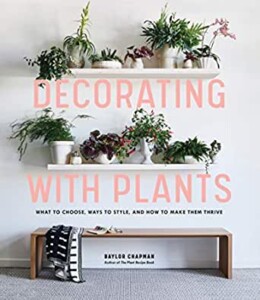
Decorating with Plants by Baylor Chapman (2019), 279 p.
Summary: Chapman walks readers through everything they need to know to bring houseplants into their home. She begins with the basics of choosing and caring for plants, with emphasis on the easiest-to-care-for varieties. Then she guides readers through the home room by room, explaining how to use plants to define a space, clean the air, and even add a lovely, living fragrance. Bring nature into your home, and enrich your life.
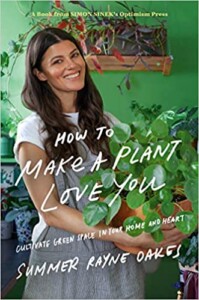
How to Make Your Plant Love You: Cultivate Green Space in Your Home and Heart by Summer Rayne Oakes (2019), 183 p.
Summary: Oakes, an urban houseplant expert and environmental scientist, has managed to grow 1,000 houseplants in her Brooklyn apartment– and they are thriving! Her secret? She approaches her relationships with plants as intentionally as if they were people. Here she encourages readers to develop an entirely new relationship with plants by becoming their ‘plant parent.’ Seeing the world from a plant’s perspective, you’ll learn to trade modern consumerism for sustainability, and become a caretaker for our planet.
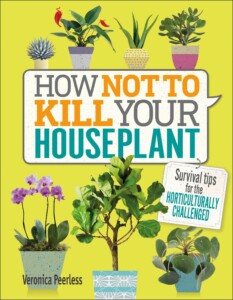
How Not to Kill Your Houseplant: Survival Tips for the Horticulturally Challenged by Veronica Peerless (2017), 142 p.
Summary: Do you have a “black thumb? Does just looking at plants cause them to wither and die? Peerless offers advice on keeping houseplants alive, even if you’re horticulturally challenged. She shows you how to create an oasis of happy flourishing houseplants, and even give suggestions for different areas of your house.
